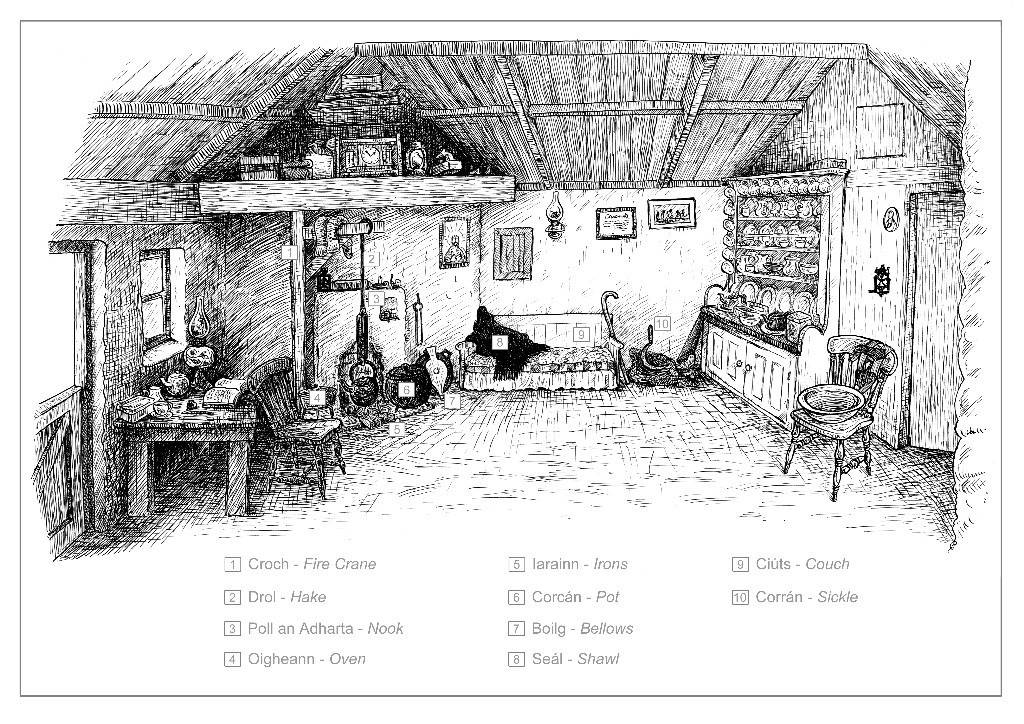The Village
It is likely that modern settlement was centred initially on the lower half of the village and progressed uphill. The 1842 edition of the Ordnance Survey’s six-inch map shows two parallel terraces of three houses (since rebuilt) in this area, close to the small headland of Rinn an Chaisleáin which overlooks the harbour…
…The village is sited on a hill slope at the eastern end of the Great Blasket Island, at a point nearest the mainland. Buildings are grouped in clusters, terraced in some of the oldest parts, and otherwise running parallel to one another. There is a distance of some 200 metres from the lower end of the Lower Village to the highest sited building in the Upper Village, a climb of fifty metres. The village extends about 300 metres along the side of the hill, the slope of the hill decreasing as it approaches the sea, ending abruptly in 20-30m high cliffs. As was the practice on the mainland, the site was chosen primarily for the shelter the hill-slope offered, and the older, vernacular buildings, all of the orientated NE/SW) are set into the slope at right angles to the contours. The front of these buildings, therefore, face towards the south, another characteristic of vernacular building in the district.
I was cradled in one of the medium-sized houses. It was a little cramped house, but what there was of it was kept neat, for my father was a very handy man, and my mother never knew what it was to be idle. She had a spinning-wheel for wool and another for flax, and combs for carding, and she used to have the job of spinning threads ready for the tailor with the distaff from her own wheel. Often she would spin it for the other clumsy women who couldn’t put themselves in shape to do it, and were too lazy, anyhow, even if they knew the trick.
Around ten years after my marriage I built a new house. Nobody handed so much as a stone or a lump of mortar to me all the time I was at work on it, and I roofed it myself. It wasn’t a large house, but, all the same, if King George were to spend a month’s holiday in it, it isn’t from the ugliness of the house that he would take his death.
In a survey of the Blasket Village in 1991 a total of sixty-five buildings were recorded, mostly in ruins. As many as twenty-nine of these had been dwelling houses and up to a quarter were used as outbuildings. In earlier times farm animals were kept in some dwellings.
Only a few of the houses are now habitable as time and the elements have taken their toll on the buildings, some of which have crumbled into the hillside where they once stood. The Islanders called this little gathering of houses ‘The Village’.
The houses were nestled into the hillside for shelter, the lower gable facing the sea at the eastern end of the island. The Congested Districts Board built five new houses in around 1910 and another two-storey guest house was later built at the southern end of the village.


